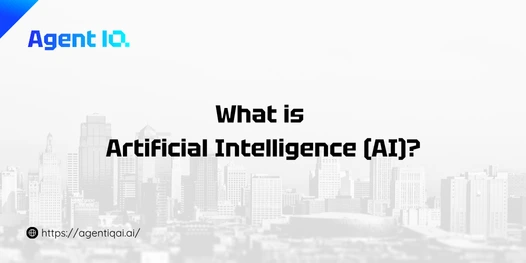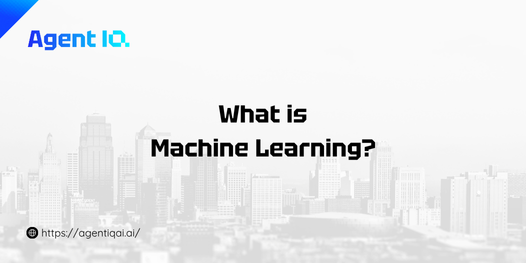What is Artificial Intelligence (AI)? Definition, Uses and Types
- Publised November, 2025
Discover what Artificial Intelligence (AI) is, its types, applications, benefits and challenges. Understand AI’s future and ethical implications.
Table of Contents
Toggle
Key Takeaways
- AI aims to mimic human cognitive functions like learning and problem-solving.
- Types of AI include Narrow AI (ANI), General AI (AGI) and Super AI.
- AI applications span healthcare, finance, transportation, and entertainment.
- Ethical considerations and challenges must be addressed for responsible AI development.
What is Artificial Intelligence? (Detailed Definition)
Artificial Intelligence (AI) is technology that aims to simulate and replicate human cognitive functions, empowering machines to perform intelligent tasks without explicit programming. It seeks to mimic human cognitive functions such as:
- Learning
- Comprehension
- Problem-solving
- Decision-making
- Creativity
- Autonomy
AI systems are designed with specific intellectual abilities:
- Learning from Data: AI systems acquire and refine knowledge by processing vast amounts of data, identifying patterns, and making predictions. This is primarily achieved through Machine Learning.
- Reasoning and Logic: AI analyzes information, applies rules, and draws logical conclusions to solve problems.
- Problem-Solving: AI can systematically analyze complex situations and devise effective solutions.
- Perception: AI interprets sensory information, similar to human perception (e.g., visual data, auditory input).
- Decision-Making: AI chooses optimal actions based on analyzed data and defined goals.
AI relies on the interplay of data, algorithms, and computational power, integrating with various academic fields like computer science, data analytics, linguistics, neuroscience, philosophy, and psychology.
Key Components/Underlying Technologies (briefly)
- Machine Learning (ML): A subset of AI where systems learn from data to identify patterns and make predictions/decisions without explicit programming. It trains algorithms to learn from data.
- Deep Learning (DL): A subset of ML using multi-layered artificial neural networks (“deep neural networks”) to process complex patterns, often resembling the human brain’s decision-making. Generative AI is an advanced application.
- Natural Language Processing (NLP): The field enabling computers to understand, interpret, and generate human language, facilitating human-computer interaction. Examples include chatbots.
- Computer Vision: Technology allowing computers to “see,” interpret, and understand visual information from images and videos (e.g., facial recognition, object detection).
- Robotics: The integration of AI with physical machines to enable intelligent automation, autonomous movement, and interaction with the physical world.
Types of Artificial Intelligence
AI can be categorized into different types based on its capabilities and stage of development.
- Artificial Narrow Intelligence (ANI) – Weak AI: is the only form of AI currently existing. It is designed to perform specific tasks or a limited set of tasks exceptionally well, but lacks general human-like cognitive abilities or self-awareness. It operates within predefined constraints.
- Artificial General Intelligence (AGI) – Strong AI: is a theoretical future stage of AI that would possess human-level intelligence across a broad range of tasks, capable of understanding, learning, and applying knowledge with versatility similar to a human.
- Artificial Superintelligence (ASI) is a hypothetical level of AI intelligence that would far surpass human intellect in virtually all aspects, including creativity, problem-solving, and social intelligence.
How Artificial Intelligence Works
AI systems operate through a fundamental process, particularly focusing on machine learning principles.
Data Collection and Preparation:
- AI systems require vast quantities of relevant “training data” to learn.
- This involves gathering, cleaning, organizing, and labeling data to make it suitable for an AI algorithm.
Algorithm Training (Machine Learning basics):
- An algorithm is a set of instructions or rules.AI algorithms are “trained” on prepared data, identifying patterns, relationships, and rules.
- This results in a “model.” The iterative training process adjusts internal parameters to improve performance.
Model Deployment and Prediction/Action:
- The trained and validated AI “model” is deployed.
- This model processes new, unseen data to generate predictions, classifications, or trigger specific actions based on its training.
Applications of Artificial Intelligence
AI’s real-world applications are pervasive and diverse.
Everyday Life: AI is seamlessly integrated into common consumer technologies.
- Examples: Smartphones (voice assistants, facial recognition, personalized notifications), streaming services (Netflix, Spotify recommendations), online shopping (product suggestions, targeted ads), spam filters, navigation apps (Google Maps traffic prediction).
Healthcare: AI is advancing medical science and patient care.
- Examples: Disease diagnosis (analyzing medical images like X-rays/MRIs), drug discovery and development, personalized treatment plans, robotic surgery assistance, predictive analytics for outbreaks.
Finance: AI impacts financial services and security.
- Examples: Fraud detection (identifying unusual transactions), algorithmic trading, credit scoring, personalized banking advice, risk assessment.
Manufacturing and Robotics: AI contributes to industrial efficiency and automation.
- Examples: Predictive maintenance (forecasting equipment failures), quality control (automated visual inspection), optimized supply chain logistics, collaborative robots (cobots) working alongside humans.
Education: AI transforms learning and administrative tasks.
- Examples: Personalized learning platforms (adaptive content), intelligent tutoring systems, automated grading, content creation for educational materials, administrative automation.
Transportation: AI is revolutionizing how people and goods move.
- Examples: Autonomous vehicles (self-driving cars, drones), traffic management optimization, logistics and route planning for delivery services.
Entertainment: AI showcases creative and personalized aspects in entertainment.
- Examples: AI-generated content (music composition, art generation, story outlines), enhanced gaming AI (more realistic NPC behavior), personalized content delivery and recommendations.
Benefits of Artificial Intelligence
AI offers numerous advantages.
- Increased Efficiency and Productivity: AI automates routine processes, optimizes operations, and performs tasks faster and more accurately than humans.
- Enhanced Decision-Making: AI analyzes vast datasets rapidly, providing deeper insights and data-driven recommendations for better strategic and operational decisions.
- Automation of Repetitive Tasks: AI frees human workers from mundane tasks, allowing them to focus on more creative endeavors.
- Innovation and New Discoveries: AI accelerates research and development across scientific fields, identifying novel patterns and solving complex problems.
- Improved Quality of Life: AI enhances safety, convenience, accessibility for people with disabilities, and offers personalized services.
Challenges and Ethical Considerations
It’s important to note that AI development poses critical concerns and ethical dilemmas that need to be considered.
Bias and Discrimination: Biases in training data can lead to unfair outcomes in areas like hiring or loan applications. Fairness and oversight are essential.
Privacy Concerns: AI systems collect and analyze vast personal data, raising risks related to data breaches and surveillance.
Security Risks: AI systems are vulnerable to adversarial attacks and misuse (e.g., autonomous weapons, cyberattacks, deepfakes).
Ethical Dilemmas: Questions arise regarding accountability for AI decisions and the moral status of advanced AI.
History of AI (briefly)
At its core, AI is a field of computer science focused on creating machines capable of performing tasks that typically require human intelligence, such as learning, reasoning, and problem-solving. Originating from the 1956 Dartmouth workshop, AI has experienced periods of both intense excitement and disappointment. Significant advancements, particularly after 2012 with the rise of deep learning and powerful GPUs, have propelled AI into the current era of generative AI.
FAQs
What is the main goal of artificial intelligence?
The primary goal of AI is to create machines that can perform tasks requiring human intelligence, such as learning, reasoning, and problem-solving, ultimately automating and enhancing various processes.
What are the different types of AI?
The main types of AI include Artificial Narrow Intelligence (ANI), which performs specific tasks; Artificial General Intelligence (AGI), a theoretical AI with human-level intelligence; and Artificial Superintelligence (ASI), a hypothetical AI surpassing human intellect.
What are some real-world applications of AI?
AI is used in various sectors, including everyday life with voice assistants, healthcare for disease diagnosis, finance for fraud detection, manufacturing for automation, education for personalized learning, transportation for autonomous vehicles, and entertainment for personalized content.
Your Knowledge, Your Agents, Your Control






